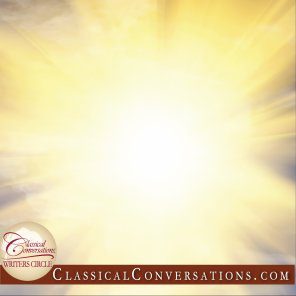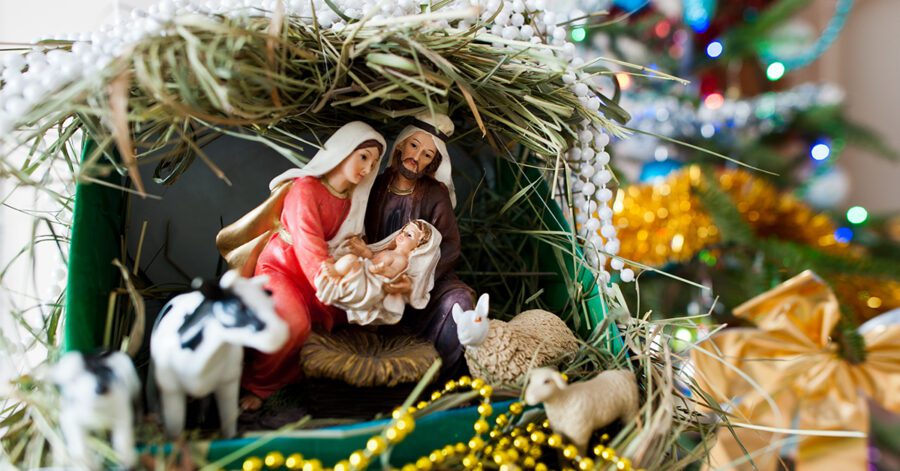As Christians, as parents, and as educators, the question, “How do we order our time?” is important for us. Did you know that the historical church created a calendar that would help its congregants reorder their time and attention around Christ and the Gospel message? Could this not help us in our attempts to educate our own children with more wisdom and faithfulness?
The Christian calendar is a wonderful gift. From the beginning of the season of Advent to the end of the season of Pentecost, each season portrays the story of the Christ. It is the story of our salvation. And if we understand Christ’s saving work correctly, we will see that it is not only about Him dying on the cross for our sins. It is also about the Genesis story of creation, man’s rebellion, and the many covenants of grace God makes with His people throughout the Hebrew Scriptures in order to restore Israel to Himself. It is about God’s incarnation and the birth of the God-man Jesus, his baptism, his ministry, his temptation and torture, his death, his resurrection, his ascension, his sending of the Spirit at Pentecost, and his reign on the throne at the right hand of God the Father at this very moment. We cannot know God apart from this work. This is how God chooses to reveal Himself to us—through what He has done in history.
The focus of the Christian calendar is its retelling or proclamation of what God has done for His people. It is a chance to reflect, worship, and celebrate what God has done and is still doing for us. Yes, it good to say the pinnacle of God’s love is found in Jesus’ death and resurrection. But in order to see those acts with more profundity and wonder, we look at all the saving acts before and after Jesus’ death and resurrection as they highlight and renew our understanding of God’s love in deeper ways. The more I reflect on the Christian calendar and try to put it into practice, I realize the seasons have a connection that brings about the true paradox of the Gospel message of death and life. This is why the pinnacle of God’s saving work is in Jesus’ death and resurrection.
In the season of Advent we have the reality of Christ’s victory in a complete and incomplete sense. It is complete in that our faith is in the finished work of Christ and his victory over death and hell. But it is incomplete in that we still wait and hope for his second coming. We have life, but the reality is that we still experience death and despair in our waiting and expectation. The prophecy of a Messiah and Israel’s deliverance is a reminder of Jesus’ promise to come again and deliver us from all pain and evil. We are to celebrate in this season knowing that there is a greater celebration to come because things are not finished. We are to live in our victory over death knowing that we still have to die. This is what living means for us.
In the season of Christmas we are given the gift of the God-man. The incarnation of God seen in the baby Jesus is a wonderful, mysterious gift that we are to celebrate. But we cannot celebrate apart from the reason why this baby was born. The baby was born to die. God became man so that he could die for the sins of the world. Life and death are inseparable within each of these seasons. This brings a sobering reality to the way we celebrate and experience each season. If you were to think about the best celebrations in your life, I suspect the most rewarding ones were the occasions you spent serving others rather than being served. Our celebrations should be far more about giving up our time and energy for the sake of others. This is biblical celebration and even biblical hospitality mirroring the Gospel theme of death for the sake of life. The Christian calendar teaches us to think like this more and more so that we may live it out with our families, friends, and neighbors.
In the season of Epiphany, we celebrate the beginning of Jesus’ ministry. The focus traditionally has been on the baptism of Jesus since the book of Mark begins telling the story of Jesus’ ministry at Jesus’ baptism. Baptism itself is the picture of death and life. Galatians 3:27 says, “For as many of you as have been baptized into Christ have put on Christ.” Baptism marks as once belonging to the old world of death and hell, but now being alive in Christ. Every time we witness a baptism, we are reminded of the fact that we ourselves were brought out of death and into life. In the story of Jesus’ baptism, John the Baptist paved the way for the Messiah in discipleship and baptism. People had flocked to John as a great prophet, but John quickly pointed the people away from himself and onto Jesus. The message of John is that in proclaiming Jesus or in paving the way for people to find truth, the messenger must recede into the background for the sake of elevating Jesus. Here again is the theme of death and life. If leaders and teachers are to teach and preach the Gospel, they must be willing to die, recede, or be diminished for the life the Gospel gives.
The theme of life and death is the theme of every day if you think about it in a poetic sense. The sun itself dies at the end of the day and resurrects at the beginning of the day. We die each night to sleep in expectation we will rise in the new morning. We also experience this reality in our relationships. Love shows itself by dying to serve others. We gain life when we lose life. The theme can be seen in nature and in the process of photosynthesis, the change of seasons, gardening, and more. Death and life are truly God’s motif within his composition of the world and its workings. Our musical God composes but also conducts this theme while improvising through the Spirit in an infinite amount of ways for His people to discover and reflect on this theme in their own individual lives. The Christian calendar is just another opportunity to see our God and His work with a renewed desire to die for the sake of life in the Gospel. John the Baptist’s words must be our words too, “He must increase, but I must decrease” (John 3:30). Here we are called to live out this beautiful paradox. The next season in the Christian calendar is Lent. How might we view death and life within this season? How might we view death and life within education?




